“Begin with an end in mind” – Stephen Covey “7 Habits of Highly Effective People”
No truer words have ever been spoken. A simple phrase that makes everyone’s life easier and more productive. Our data science team tries to live by that simple phrase, but it’s difficult because we want to jump right into “solution mode” …we have seen so many similar problems, that we already know and understand how to solve that problem. And that’s an approach that leads to customer frustration and lack of adoption.
To combat the “jump to solution mode too quickly” challenge, our data science team makes extensive use of the Hypothesis Development Canvas. The Hypothesis Development Canvas ensures alignment between the Data Science team and the business stakeholders in understanding where and how analytics can optimize the organization’s key business initiatives (see Figure 1).
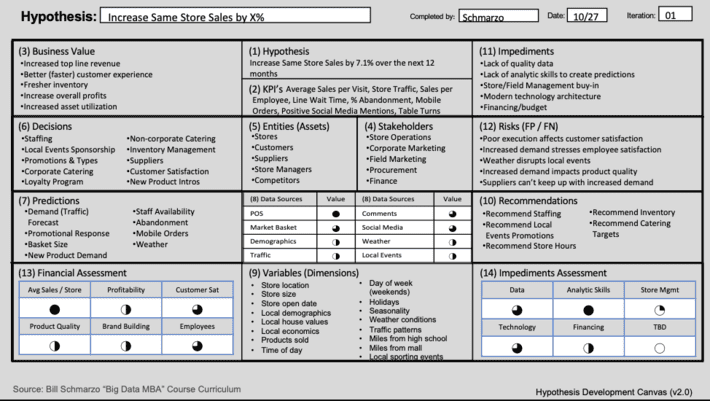
The Hypothesis Development Canvas ensures that we thoroughly understand the problem our key stakeholders are trying to address, the metrics against which progress and success will be measured, the key decisions that the stakeholders need to make in support of the targeted business problem, the predictions that we’ll need to make to support those decisions and the data sources that might be better predictors of business and operational performance.
The Hypothesis Development Canvas is a critical design tool that ensures that we have captured all the important information necessary to deliver material value to the business and operational stakeholders. Yes, we cheat in our data science process by doing all of this pre-work before we ever “put science to the data.”
As I discuss in the blog “Does Your Hypothesis Development Canvas Tell a Story?”, a well-structured Hypothesis Development Canvas, like a well-structured storyboard or journey map, provides a concise yet thorough way to make a story – or use case – come to life by personalizing the experience for our business stakeholders (see Figure 2).
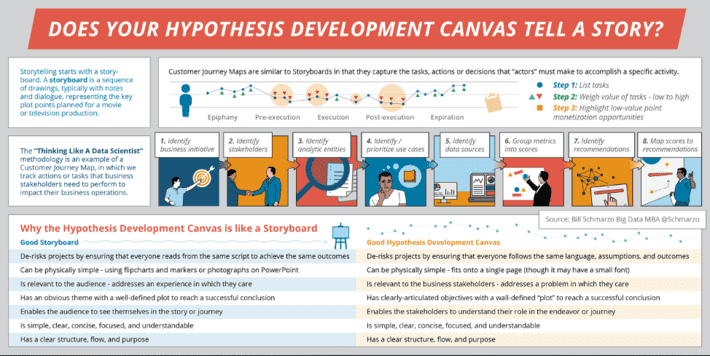
Think of the Hypothesis Development Canvas as a miniature movie about the “day in the life” of your key business stakeholders in their use of data and analytics in support of their key use cases.
The Interactive Hypothesis Development Canvas
In the blog “Wrestling with Data Science “Second Surgeries?” Try MVE!”, I shared a spreadsheet version of the Hypothesis Development Canvas courtesy of Jason Arnold. You can download the spreadsheet from my DeanofBigData.com website (the download is at the bottom of the infographics page).
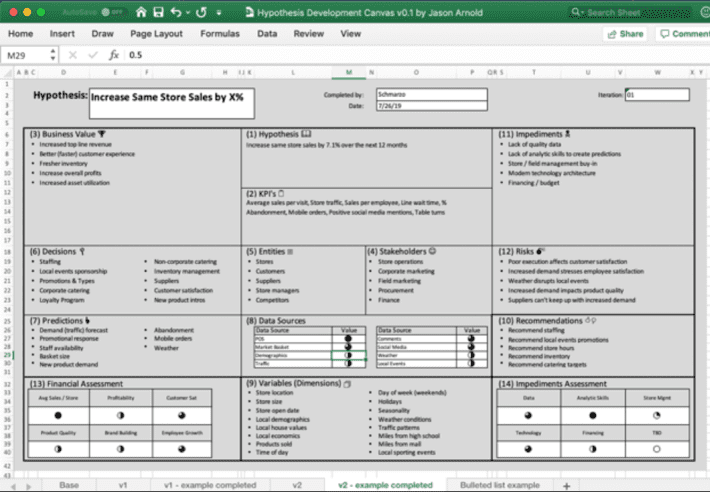
Now there this is another tool to help us build out our Hypothesis Development Canvas…a mind mapping tool. This is an interactive tool (I use iThoughtSX) which we can use in interactive sessions with our key stakeholders to identify and validate the key data science requirements. For example, in Figure 3, I have used the mind mapping software to recreate the business-related panels (in green background) from the Hypothesis Development Canvas in Figure 1.
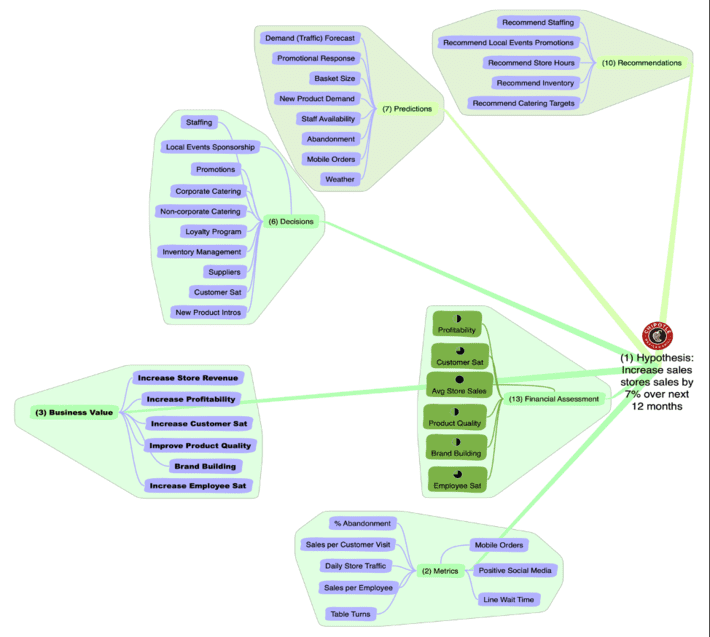
Then in Figure 4, I have walked through an exercise with my key business stakeholders – Store Management, Field Marketing and Store Operations – to understand and validate that I have captured the necessary details to support their “Increase Same Store Sales” business initiative.
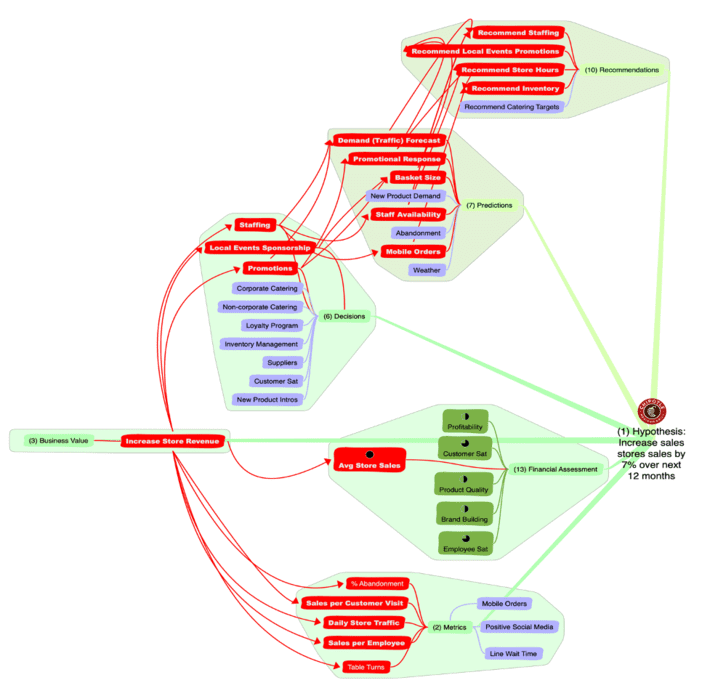
Okay, I know that these images are hard to read, but I think you get the point how a simple mind mapping tool can be used when working with key stakeholders to tease out and validate the key business and operational requirements necessary to ensure a successful data science project.
The mind map tool can help drive collaboration between the data science team and the business stakeholders to understand where and how AI and advanced analytics to derive and drive new sources of customer, product and operational value. “Begin with an end in mind”…not a bad idea if your organization is serious about leveraging data and analytics for business and operational value.
